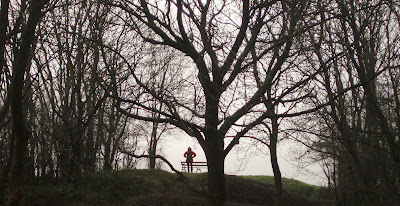Coaches, Roads and Paths.
As D. and I waited to cross the busy A40 Road, en route to Shipton Oliffe, following The Gloucestershire Way, I thought of the changes in our transport systems over the last two hundred years.
We had just walked from behind 'The Frogmill Inn, ' one of the oldest coaching inns in Gloucestershire.
This was the first stop in 1779 for the Gloucester to London, via Oxford Stage Coach. Here was space for 20 stabled horses together with a smithy and of course meals and refreshments for the eight passengers that could be carried. The famous ' Glocester (sic) Flying Machine ' could complete this 105 mile journey in just two days.
Find out more at: London stage.
Most of this information was gleaned by Samuel Rudder's " History of Gloucester (1779) ."
You can read some amusing extracts ( though not about the coaching) by clicking here: Samuel Rudder.
After crossing this busy road and then heading in the direction of Shipton, we soon came on our right hand side to a footpath, which went through a handgate via a drive to a second gate.
You will see from the above arrangement, that we next came to a convoluted arrangements of gates and paddocks; which although giving clear direction; spoiled the sense of freedom that normally the trail brings.
I hope this does not become an trend in the Cotswolds. Too rigid a network spoils the enjoyment of the event.
But having said that, there is always something to sustain the eye and after a short time we came by the River Coln, gracefully sweeping through the meadowland, bringing us to a little footbridge.
Once crossed we emerged into Shipton Oliffe village with a chapel to our left and the glimpse of a ford to our right.
Soon after this we reached our car, opposite the church on our right and thus completed the section of the walk from Crickley to Salperton.
Next stop Stow on the Wold.
Enjoy.
Ck.
We had just walked from behind 'The Frogmill Inn, ' one of the oldest coaching inns in Gloucestershire.
This was the first stop in 1779 for the Gloucester to London, via Oxford Stage Coach. Here was space for 20 stabled horses together with a smithy and of course meals and refreshments for the eight passengers that could be carried. The famous ' Glocester (sic) Flying Machine ' could complete this 105 mile journey in just two days.
Find out more at: London stage.
Most of this information was gleaned by Samuel Rudder's " History of Gloucester (1779) ."
You can read some amusing extracts ( though not about the coaching) by clicking here: Samuel Rudder.
After crossing this busy road and then heading in the direction of Shipton, we soon came on our right hand side to a footpath, which went through a handgate via a drive to a second gate.
You will see from the above arrangement, that we next came to a convoluted arrangements of gates and paddocks; which although giving clear direction; spoiled the sense of freedom that normally the trail brings.
I hope this does not become an trend in the Cotswolds. Too rigid a network spoils the enjoyment of the event.
But having said that, there is always something to sustain the eye and after a short time we came by the River Coln, gracefully sweeping through the meadowland, bringing us to a little footbridge.
Once crossed we emerged into Shipton Oliffe village with a chapel to our left and the glimpse of a ford to our right.
Soon after this we reached our car, opposite the church on our right and thus completed the section of the walk from Crickley to Salperton.
Next stop Stow on the Wold.
&&&&&&
To finish this week, here is a picture from the church at Apperley.
It is of an Anglo Saxon Font, believed to be one of the oldest in the country. It was found in a nearby farm yard, being used as a water trough.
It is of an Anglo Saxon Font, believed to be one of the oldest in the country. It was found in a nearby farm yard, being used as a water trough.
Now restored to the church, which itself dates back to AD 800.
Notice the beautiful Celtic Knot pattern which can be traced around its entire circumference.
As promised temperatures are rising and high pressure is continuing for the week ahead.Notice the beautiful Celtic Knot pattern which can be traced around its entire circumference.
Enjoy.
Ck.









Comments
Post a Comment
please feel free to comment and point out faults.
glad to have you aboard .
Curlykale.